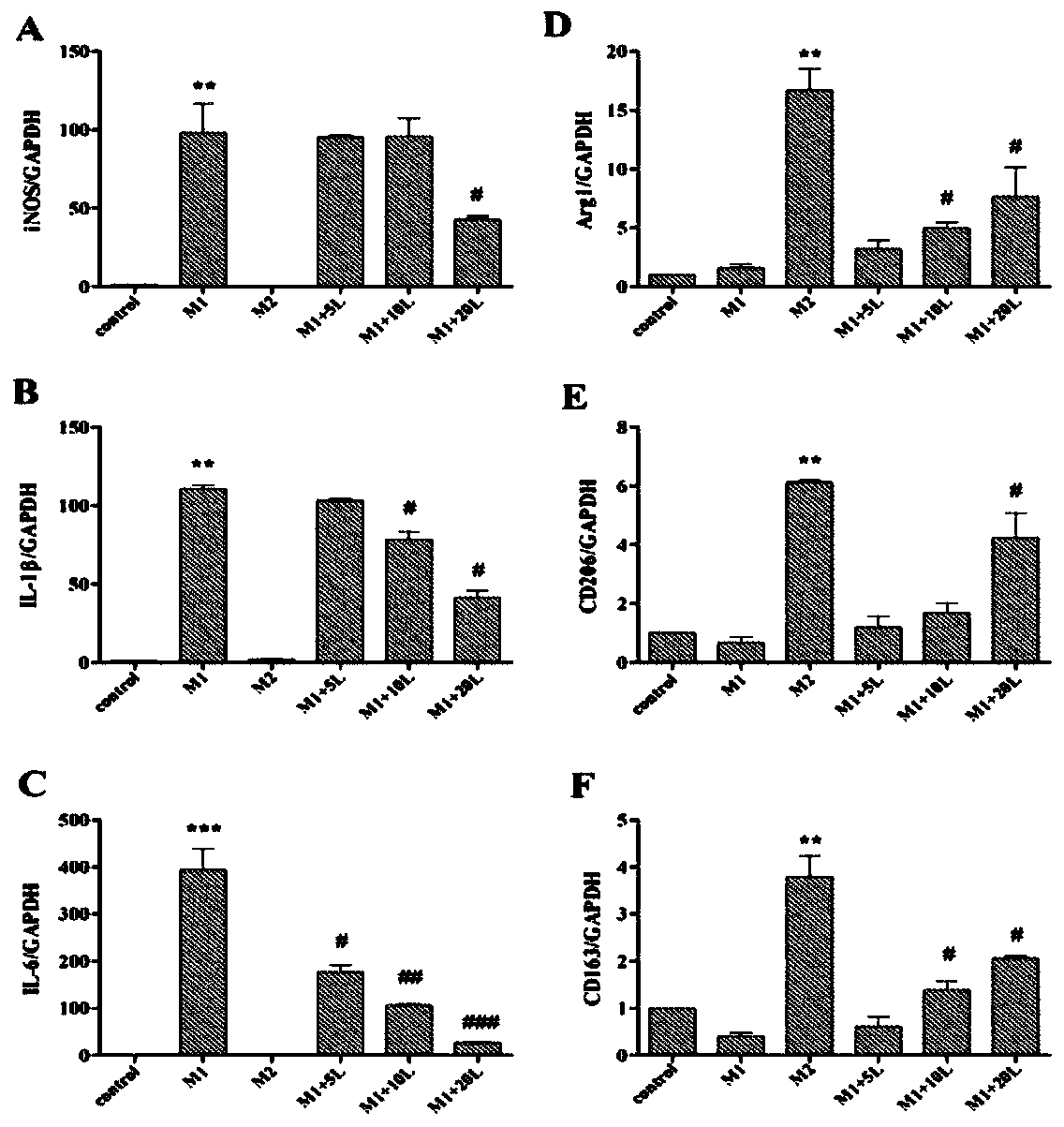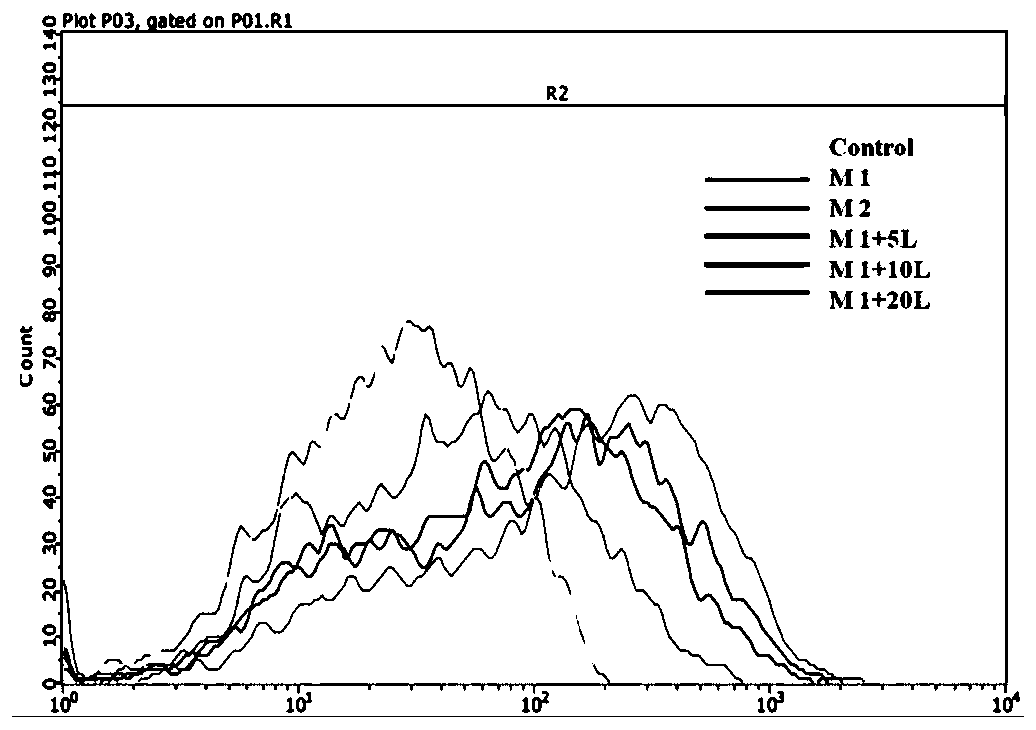Application of monomer luteolin coming from vegetables and fruits and Chinese herbal medicine
A technology of luteolin and Chinese herbal medicine, applied in the field of biomedicine, can solve problems affecting the polarization of macrophage inflammation
- Summary
- Abstract
- Description
- Claims
- Application Information
AI Technical Summary
Problems solved by technology
Method used
Image
Examples
Embodiment 1
[0015] Embodiment 1: MTT method detects cell viability
[0016] Cells growing in logarithmic phase were taken to prepare single cell suspension, and cultured overnight in 96-well plates. LPS and IFN-γ stimulated cells to induce M1-type polarization, and IL-4 stimulated to induce M2-type polarization. At the same time, M1 cells were treated with luteolin at final concentrations of 5, 10, 20, 40, and 80 μmol / L. After 24 hours, Add 20 μL of MTT (5 g / L, PBS) to each well, discard the supernatant after 4 hours, add 150 μL of DMSO to each well, measure the absorbance (A value) after the crystals are completely dissolved, and calculate the growth rate. According to the above growth curve, select the corresponding luteolin concentration for subsequent steps.
[0017] Growth rate=(A value of experimental group / A value of control group)×100%.
[0018] Luteolin at concentrations lower than 20 μmol / L had no effect on the viability of polarized cells. MTT results showed that IL-4-induce...
Embodiment 2
[0019] Embodiment 2: ELISA detection supernatant cytokine content
[0020] 2×10 cells per well 5 cells / mL density, after overnight culture, LPS and IFN-γ or IL-4 induced polarization, and then added different doses of luteolin. After 24 hours, the supernatant was collected, and the levels of IL-6 and TNF-α were detected. The specific operation was performed according to the ELISA kit detection instructions.
[0021] IL-6 and TNF-α secreted by activated M1 cells were significantly up-regulated, compared with the normal control group, there was a significant difference; after luteolin treatment, the secretion of cytokines decreased, compared with the M1 group, there was a significant difference; IL- 4 The IL-6 and TNF-α secreted by the activated M2 cells were significantly down-regulated, compared with the M1 group, there was a significant difference, and there was no significant difference compared with the control group. The result is as follows:
[0022] group
...
Embodiment 3
[0024] Example 3: Fluorescent quantitative PCR detection of expression of inflammatory factors
[0025] Treat the cells overnight in the same way as in Example 2, collect the cells, extract the total RNA by Trizol method and reverse transcribe it into cDNA, amplify the target gene by fluorescent quantitative PCR, and calculate the relative expression levels of inflammatory factors and anti-inflammatory factors.
[0026] After the intervention of different concentrations of luteolin in M1 polarized macrophages, the secretion of M1-type inflammatory factors such as iNOS, IL-6 and IL-1β was significantly down-regulated, which was significantly different from the M1 group; M2-type related The expression of anti-inflammatory molecules such as Arg1, CD206 and CD163 was up-regulated in a concentration-dependent manner, and there was a significant difference compared with the M1 group. See figure 2 .
PUM
 Login to View More
Login to View More Abstract
Description
Claims
Application Information
 Login to View More
Login to View More - R&D
- Intellectual Property
- Life Sciences
- Materials
- Tech Scout
- Unparalleled Data Quality
- Higher Quality Content
- 60% Fewer Hallucinations
Browse by: Latest US Patents, China's latest patents, Technical Efficacy Thesaurus, Application Domain, Technology Topic, Popular Technical Reports.
© 2025 PatSnap. All rights reserved.Legal|Privacy policy|Modern Slavery Act Transparency Statement|Sitemap|About US| Contact US: help@patsnap.com



